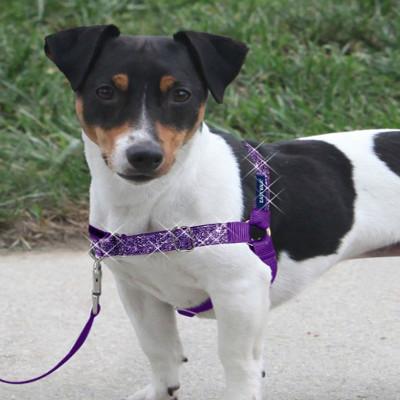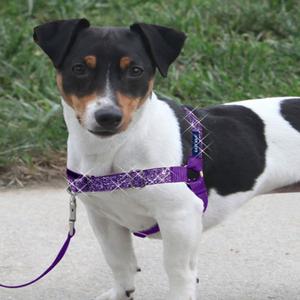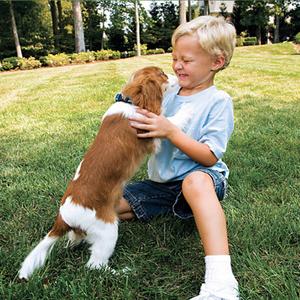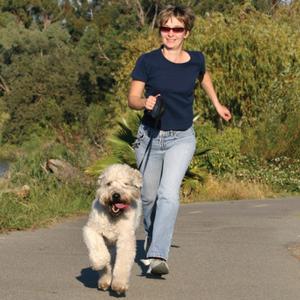 This is a 2-part article on leash training puppies. The first part is about the prep and getting him used to his collar or harness, and the second is about the mechanics of training.
This is a 2-part article on leash training puppies. The first part is about the prep and getting him used to his collar or harness, and the second is about the mechanics of training.
The prep is important because it likely will be a disaster if you clip the leash on your puppy and walk out the door and expect him to accept the leash, being outside in a new environment, AND walking next to you. That's way too many things for his developing brain to process. He may be frightened to go outside, and now you've compounded it by adding this thing that won't let him go where he wants. He now has a bad association with the leash, and the associations that he makes in puppyhood can last a lifetime.
It's much easier to teach a puppy to walk next to you than to teach an older dog because you are teaching on a clean slate rather than erasing and teaching a new way. My advice - begin the process immediately! And the process begins with teaching your dog to sit because many dogs squirm or run away and have you chase them when you are trying to put on the leash. Avoid this by training him the right way from the beginning.
Fitting the Collar
Some breeders and shelters put colored cloth tape on their puppies' necks to identify them. Your pup may already be used to having something around his neck, which will make your job easier.
Be sure that the collar fits correctly so it's not too tight or too loose because it can chafe your puppy's neck.
A collar should be about 2 inches bigger than your puppy's neck, but he should not be able to pull his head out of the collar.
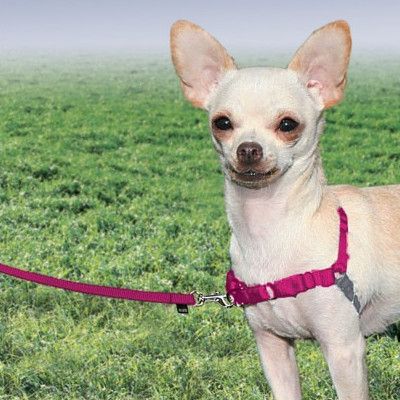 Fitting the Harness
Fitting the Harness
I prefer harnesses over collars for a couple of reasons. One is that if your puppy runs to the end of the leash, then he gets a real jolt to his neck, which may damage his trachea. I would definitely recommend a harness for smaller breeds like toy poodles that are prone to collapsing tracheas.
The second reason is that when predators attack, they like to attack at the throat. We don't want our dogs to feel that they are being attacked and have to run away from us when they are on leash!
The harness should be snug around his body so he can move freely but not slip out of it. When you measure for fitting, measure around the broadest part of the chest. Different harness manufacturers have different standards for what they call a "small," so you need to measure. Err on the side of caution and get a larger one if it is not an exact size.
Training Puppies to Accept a Collar or Harness
Train before his meals so he's motivated by hunger. You can mix some small, delicious treats with his kibble. Vary rewarding with treat and kibble bits so he never knows what he is going to get.
-
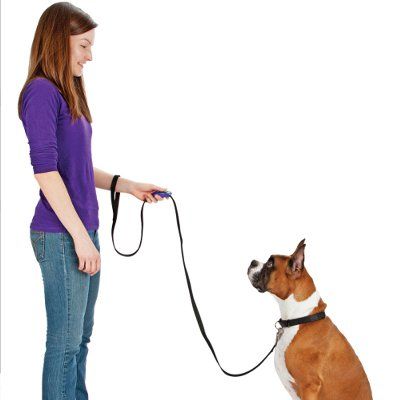 Let him smell the collar or harness, and give him a treat.
Let him smell the collar or harness, and give him a treat. - Put it on his neck or back. Give him a treat while it is on his neck or back. When you take it off, the treats stop.
- Repeat the process, lengthening the time it is on his neck/back to about 10 seconds.
- Then fasten the collar/harness and give him treats. Repeat a few times.
- Leave the collar or harness on him. Then give him the rest of his meal.
- In the unlikely event that he scratches, whines, squirms, yelps, rolls, or acts like he is being tortured when you first put on a collar or harness, distract him by running around or playing a game. Only remove the collar or harness when he stops trying to get out of it.
- Remove the collar or harness when you put him in a crate or pen.
- Have him wear the collar or harness for a few days before beginning leash training.
Stay tuned for the second part of the lesson, which is training your puppy to get comfortable with walking on a leash.

